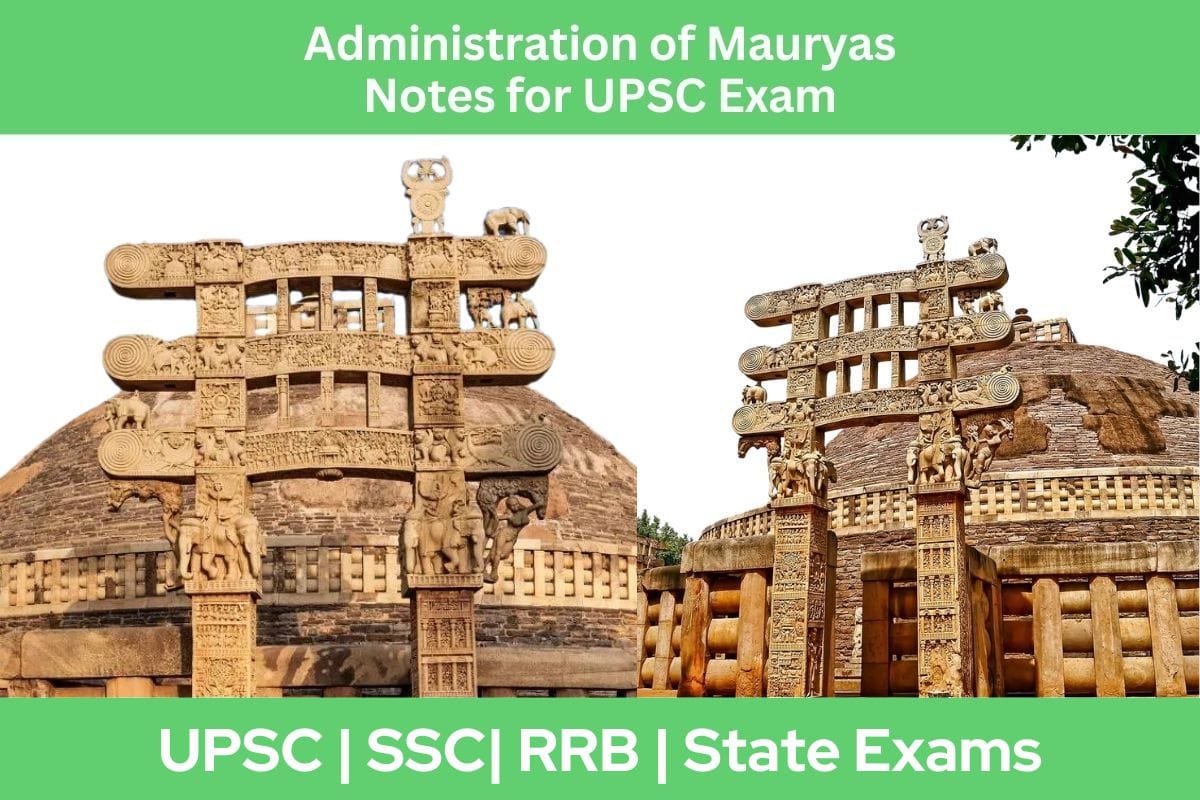
Mauryan Administration
The Mauryan Empire, existing from 321 B.C.E. to 185 B.C.E., stands as the initial pan-Indian realm, covering a vast part of the Indian subcontinent. It included territories in present-day Iran, along with central and northern India.
After the passing of Alexander the Great in 323 BCE, Chandragupta Maurya, the founder of the Mauryan dynasty, took control of the Punjab region from the southeastern borders of Alexander’s former realm.
Chandragupta’s key advisor, Kautilya, also known as Chanakya, significantly influenced the empire’s development. Kautilya is remembered for creating the Arthashastra, a guide on governance and administration, and for his role as a political strategist. The Arthashastra outlines how a state’s economy and authority should be organized.
Central Administration
- The Mauryan government had a central power structure, where the king held the highest authority.
- Nevertheless, the ruler received support from the council of ministers known as Mantri Parishad.
- As per Kautilya, there are seven key elements in a state (Saptanga theory): the King (Raja), Friend (Mitra), Fort (Durg), Secretaries (Amatya), Territory (Janapada), Treasury (Kosha), and Army (Sena).
Justice System:
- At the helm of the judicial administration was the ruler. In both villages and towns, disputes were resolved by Gramvardha and Nagarvyavaharika Mahamatras, respectively.
- Within the state, Rajukas, akin to today’s district magistrates, played a significant role. Kautilya mentions two distinct courts: Dharmasthiya (Civil Court) and Kantakashodhana (Criminal Court).
Local Administration:
- Beyond the directly governed urban areas, the empire was divided into four provinces, each overseen by a prince or a member of the royal family (Kumara or Aryaputra).
- Asoka presided over four provinces: the Northern Province (Uttarapatha) with Taxila as its capital, the Western Province (Avantiratha) with Ujjain as its headquarters, the Eastern Province (Prachyapatha) with Tosali as its center, and the Southern Province (Dakshinapatha) with Suvarnagiri as its capital.
- The central province of Magadha, with its capital at Pataliputra, served as the kingdom’s headquarters.
- Some officials of the viceroy, like the Mahamattas, were appointed by him and toured every five years.
The village functioned as the smallest administrative unit.
- Gramika Villages enjoyed significant autonomy.
- Pradeshika referred to the governors of provinces or district magistrates.
- Tax collectors under Pradeshikas were known as Sthanikas.
- Governors of forts were called Durgapala.
- Antapala held the position of Frontier governors.
- Lipikaras were the scribes, and Akshapatala served as the Accountant General.
Military Administration
The military was managed by a group of 30 members split into six teams for infantry, cavalry, elephants, chariots, navy, and transport. There were two kinds of detectives in Gudhapurushas/Detectives:
- Sansthan (stationary)
- Sanchari (wandering)
A crucial aspect of the Mauryan government was maintaining a large military force. Kautilya authorized individuals from all four Varnas to serve in the military.
According to Pliny, the Mauryas had an army of six lakh soldiers. The Mauryans also had a navy as part of their military.
MCQ Test on Administration of Mauryas GK MCQs With Answer & Explanation in English



Leave a Reply